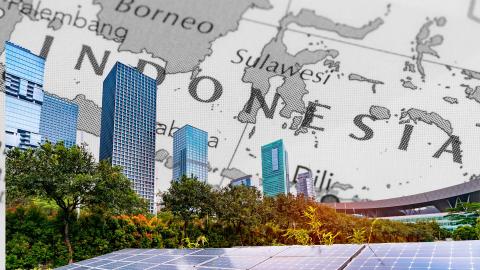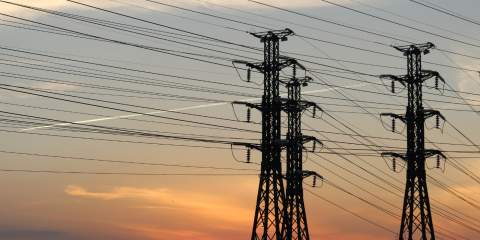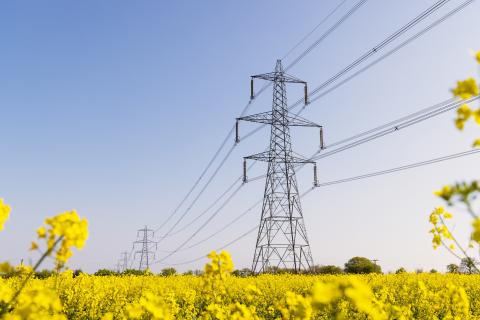Sustainable financing key for Red Eléctrica to close Spain’s grid investment gap

Key Takeaways:
As Spain’s electricity grid operator, Red Eléctrica de España (REE) is critical to the country’s energy transition and a key part of Europe’s power modernisation plans.
REE’s 2026-2030 strategic plan will be crucial in bridging the grid investment gap to ensure Spain meets its energy transition targets and enhances energy affordability and security for the country and its neighbours.
Scaling up capital spending on energy storage, interconnections and digitalisation is essential to close this gap. Failure to do so risks more grid congestion and financial and reputational damage to REE itself.
Parent company Redeia’s goal of 100% sustainable financing by 2030 is attainable. Further improving transparency and accountability would broaden its access to funding.
18 November 2025 (IEEFA) | Spain’s electricity grid operator Red Eléctrica de España (REE) must seize the moment to relieve the growing pains associated with integrating renewable energy into the country’s power grid, according to a new Institute for Energy Economics and Financial Analysis (IEEFA) report released today.
Spain’s goal to generate 81% of its electricity from renewable sources by 2030 puts REE at the heart of the country’s energy transition, with ramifications for its neighbours and Europe as a whole, the report finds.
REE’s new strategic plan for 2026-2030 will be pivotal for the transmission system operator (TSO) if it is to bridge the investment gap, relieve grid congestion and improve cost efficiency, according to the authors, IEEFA analysts Kevin Leung and Jonathan Bruegel.
“Grid congestion remains a key barrier to the rapid deployment of renewable energy in Spain, as generation growth often outpaces the availability of transmission capacity in many regions,” said Leung, sustainable finance analyst at IEEFA.
“This underscores the urgency for REE to accelerate investments in grid strengthening and to lead on enabling green hydrogen development and digitalisation.”
As the EU moves to modernise and decarbonise its power grids, REE’s new strategic plan can provide a blueprint not just for Spain’s energy future but set the standard for TSOs across Europe.
“Spain offers a critical case study of how a TSO should align business strategy, asset split, investment planning and financial management with broader climate and energy goals,” said Bruegel, European power sector analyst at IEEFA.
“This requires a robust, modernised and future-proof transmission network. Enhancing interconnection capacities will also be essential as Spain contributes to EU energy affordability and security.”
This can be achieved by scaling up capital expenditure in key areas, such as energy storage, interconnections and digitalisation, the report recommends. Green financing is the key to widening access to funding.
“Despite REE’s solid investment-grade profile and strategic execution under its 2021-2025 plan, a material investment gap remains,” said Leung. “Investment will need to rise significantly in the new strategic plan — not only to meet future system needs but also to address any shortfalls from Spain’s 2021-2026 electricity grid planning period. Sustainable finance will be a decisive enabler of this transformation.”
The report recommends REE adopt the European Green Bond Standard and debt instruments linked to performance targets, such as renewable capacity enabled, emissions avoided and flexibility gained. This would broaden the company’s access to funding, reinforce transparency and accountability, and boost investor confidence.
“REE’s role as Spain’s sole transmission system operator gives it a unique responsibility to ensure the country’s renewable energy targets are achieved without compromising system reliability or affordability,” said Bruegel.
“Ultimately, REE’s success will depend on aligning robust financial management and operational excellence with the wider European grid modernisation agenda.
“By executing its investment plans effectively and transparently, REE can safeguard Spain’s energy affordability and security. It can also emerge as a benchmark for how electricity transmission system operators can drive the energy transition through disciplined, sustainable and forward-looking infrastructure investment.”
Failure to close Spain’s grid investment gap risks perpetuating grid congestion, stalling renewable capacity growth and weakening the credibility of the country’s decarbonisation pathway — ultimately increasing financial and reputational risks for REE, the report warns.
Press contact
Jules Scully | [email protected] | +447594 920255
About IEEFA
The Institute for Energy Economics and Financial Analysis (IEEFA) examines issues related to energy markets, trends and policies. The Institute’s mission is to accelerate the transition to a diverse, sustainable and profitable energy economy. www.ieefa.org














